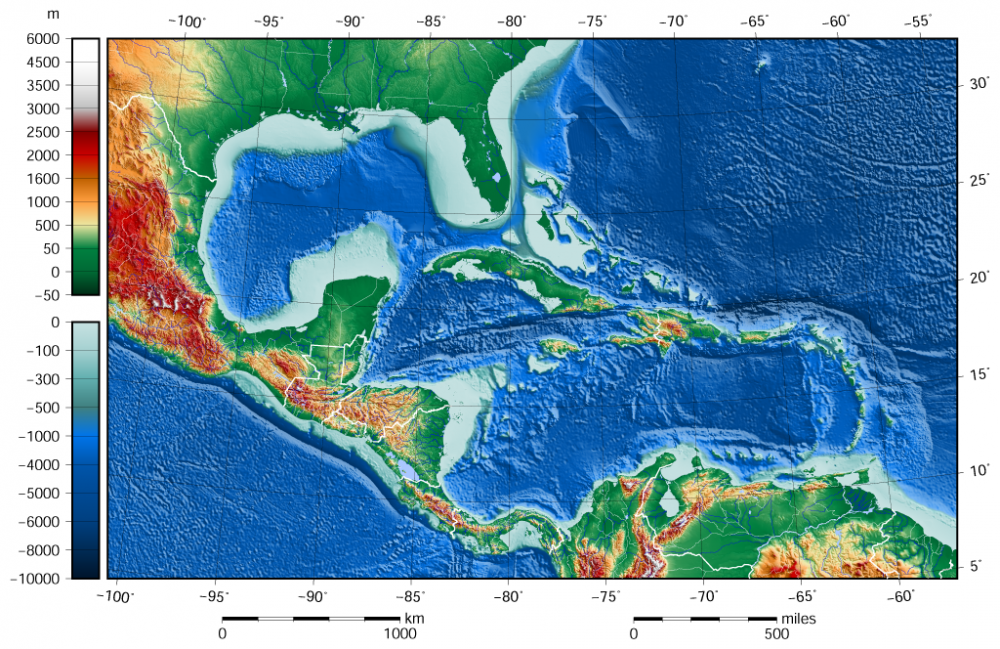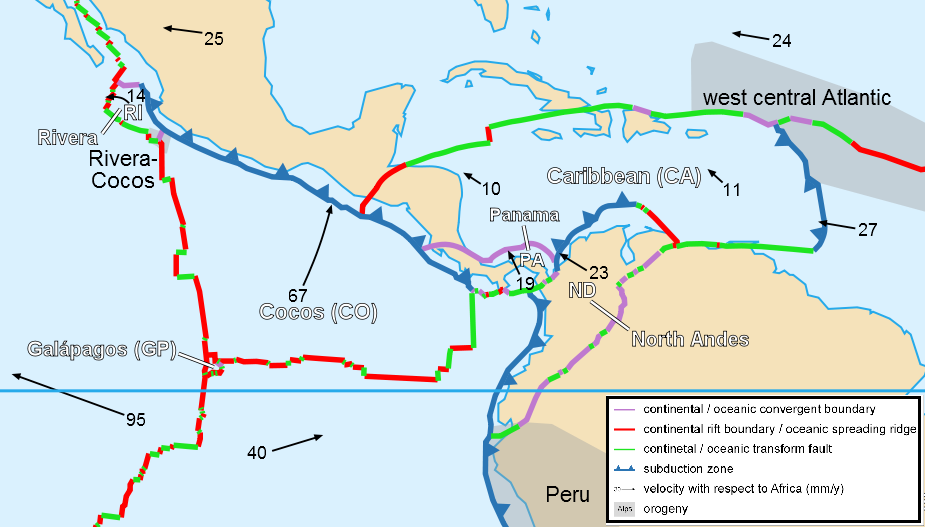-
Posts
1069 -
Joined
-
Last visited
-
Days Won
8
Content Type
Profiles
Forums
Events
Everything posted by sethoflagos
-
This simply doesn't follow. The IDE is not universal, particularly for higher pressures, and says nothing of the nature of particla collisions. A bit of algebraic rearrangement gives: CVT = CPT - PV which is equivalent to U = Q + W. This demonstrates that it's simply a convenient reformulation of the First Law. Obviously, CV and CP include all available thermal degrees of freedom on an equivalent footing. All practical thermal processes involve bulk expansion or compression. A truly constant volume operation would be rather difficult to achieve in practice. Gas processes operate within a spectrum that ranges between two idealised endpoints: the isothermal (PV = constant) and the isentropic (PVk = constant) where k is the ratio of specific heats CP/CV. As a general rule, the faster a process occurs, the more nearly it approaches the isentropic endpoint. This is a strong indicator that all thermal degrees of freedom are immediately available to momentum exchange. Everybody needs some kind of mental picture to help get their heads around such physical processes, and as you've pointed out, equipartition allows estimation of pressure and temperature from consideration of linear momentum alone. But to extrapolate from this an independence of rotational and vibrational modes is to confuse correlation with causation I think. At least it rattles the mental pictures others have which may be no bad thing, but you're going to get some kickback for that.
-
@KJW. I understand that you regard my last few posts as too much of a waste your precious time to be worth responding to. But I trust that in turn, you will not object to me regarding your silence, particularly wrt the non-conservation of linear momentum in general gas collisions, as concessions to the arguments presented. Live long and prosper.
- 30 replies
-
-1
-
But it isn't. The 'boink' of each collision that creates the emergent property of pressure is in itself the vector sum of translational, rotational and vibrational momentum changes along the axis of point contact. The 'independence' you claim relies on the fact that statistically the rotational and vibrational transfers average out to zero over a sufficiently large number of collisions. It's a mathematical artefact. Imagine being hit by a spinning dumbell. It makes a difference which end hits you.
-
Only in one very special case: that of a theoretical constant volume thermodynamic process. More general cases show P, T dependence involving the ratio of specific heats, (~7/5 for diatomic gases) which per force requires consideration of all available thermal degrees of freedom, not just the three translational ones. Exactly!
-
And yet when we measure temperature gradients between systems at different temperatures, in non-extreme conditions they are generally linear in agreement with the dominant mechanism for transfer of heat being by momentum exchange. If the dominant mechanism were EMR as you suggest, then the measured gradients would be highly non-linear (cubic in delta T I think). I understand your POV but I think it's a misleading one. Particle collisions in gases that support rotational and vibrational modes only follow conservation of linear momentum on average. In the general case, some momentum is transferred via the other modes.
-
Preference? We know that metals expand appreciably with increasing temperature, so some of the thermal energy is absorbed in the 'static' phenomenon of increased interatomic bond lengths. But this isn't thermal energy anymore and doesn't contribute to the temperature. You can't discard lattice vibrations just because you don't like them. And I think you'll struggle to explain the typically high thermal conductivity of most metals if you ignore the free electrons.
-
Maybe we're just drawn by curiosity to things that stand out from the background.
-
At least they sound more impressive than their literal English translations ('jitter motion' and 'braking radiation'). I'd not call it a 'pet peeve' as such but I've learnt to always bear in mind that translations of foreign technical documents are rarely error free. I had a salutory lesson during design work for a couple of utillties supply facilities in Malaysia. I requested some local groundwater analyses from the client, and when they arrived I learnt that the Malay word for water is 'air'. That caused a stir of interest at the hazard and operability review.
-

Yuca flour, yuca starch. Are they different ? [baking]
sethoflagos replied to Externet's topic in The Lounge
After 25 years in Nigeria, fufu (go Google) remains a step too far for me. I try it from time to time but come away from the experience understanding that I'm evolved to find a good crusty loaf my carbohydrate of choice. Mrs Seth loves it and total respect to those who can share in that pleasure, but it is a taste I have yet to acquire. -
The.ramp slope should be no more than what is needed to get the pellet rolling. Too steep and the pellet will slide rather than roll smoothly. Assuming a true conical profile, the pellet will follow a track bounded by two circular arcs of radius length x 6 / (6 - 4.5) mm and length x 4.5 / (6 - 4.5) mm. You might consider embedding photo detectors.in the ramp just outside these bounds to detect out of tolerance pellets coupled to a deflector arm or similar to dispose of them.
-
Evolution in cat size tends to be governed by niche partitioning: cat species don't thrive when in direct competition with other carnivores of similar size. In much of southern Amazonia there are six 'common' cat species. In size order: jaguar, puma, ocelot, jaguarundi, margay and oncilla. They each avoid direct competition by feeding on different prey appropriate to their size. However, the jaguarundi and similar sized margay avoid competition by one being diurnal, the other nocturnal. If they'd diverged in size instead, they'd encroach on niches already occupied by ocelot and oncilla. So the whole cat guild can be viewed as coevolving in such a way so as not to step on each other's toes.
-
The Na:K mass ratio order of magnitude appears to be established by the ~11:1 ratio in the Earth's mantle. This probably manifests predominantly as hydrothermal vents entering the oceans at mid-oceanic ridges. Beyond that it gets complicated as the elements take different routes in their respective cycles. However, a huge amount of ancient marine potassium has become preferentially locked up in the granites of the Earth's continental crust which must account for some significant depletion of the residual potassium in the ocean relative to sodium. It isn't the complete picture but it may be a good part of it.
-

Self-pollinating impairing cross-pollinization ? [botany]
sethoflagos replied to Externet's topic in Other Sciences
I'll stand to be corrected but my understanding is that apples cannot self-pollinate. Cultivated apple trees are cloned varieties grafted onto an appropriate root stock. All fruit on a tree is true to the grafted cultivar, but the seeds will not sprout true to type - you'll get all sorts coming up, even from a single fruit. -

Is Quantum event proportional to Entropy?
sethoflagos replied to Oryza sativa's topic in Classical Physics
So you dispute the law of conservation of quantum information, which is a consequence of the no-hiding theorem. This is in turn considered rigorously proven by many authorities. Your argument by common sense seems to fall a little short in comparison. Google is your friend. The wiki page for 'no hiding theorem' addresses most of your misunderstandings. Even the black hole stuff. -
I'm guessing you are referring to the apparent 'furrow' running roughly E-W from the SE end of Cuba to the coast of Belize. Compare with a tectonic map of the Caribbean area The feature clearly aligns with the northern boundary of the Caribbean plate, comprising two E-W transform faults flanking a small N-S trending rift zone. Yes, it looks like a furrow. But it's tectonic, not extraterrestrial in origin.
-
It's focused somewhere but with a very shallow depth of field. So most of the image is oof The focal plane doesn't appear all that planar. Is it taken through an astigmatic lens?
-
... or cylindrical (commonest in my line of work) or even spherical from time to time. False premise (see above) and no. If coordinate axes are not mutually perpendicular, how do you even separate the vectors into independent axial components? Difficult for verbal perception too if you're going to use made up words. Then what use is it? Where are the triangles in a torus? Fluid? Navier-Stokes is a continuum model, not a particle model. This is a rather fundamental distinction and renders the rest of your post somewhat off-topic as far as solving Navier-Stokes is concerned.
-

Humans' and baboons' common ancestor
sethoflagos replied to Gian's topic in Evolution, Morphology and Exobiology
Dawkins has used hypothetical cases such as this as a reductio ad absurdum criticism of the Linnaean classification system. In particular, that intermediate evolutionary forms must be shoehorned into either a parent or daughter species at some arbitrary single point mutation event. The reality is of course, that genetic isolation etc allow the transition to occur over many generations of intermediates. The OP is simply an attention seeking gross misrepresentation of Dawkins' argument. -
I responded to your question about the funding of palaeontological studies in good faith only to discover that your OP was more of a vehicle to peddle conservative fiscal propaganda. Or at least take its dogmatic assumptions at face value. Okay then: In general, private commercial enterprise requires a supply of well-educated young recruits (including palaeontologists and rocket scientists) but is too short-sighted and avaricious to fund public education themselves. Relying on the population to fund their own individual education creates fundamentally unstable, self-perpetuating tiered societies where the majority are denied access to good education and the better-paid jobs that follow on from that due to lack of means. Most of the more successful economies fund universal education programmes through progressive taxation policies leveraging preferentially on commercial profits and the wealthier sections of society to maximise the opportunities for all to realise their full potential. This latter option carries the additional benefit that a better-educated majority is more likely to appreciate the fairness and political stability of such a system, and less likely to indulge in armed insurrection for example. Of course, there are those who prefer the privileges they gain from less fair systems of wealth distribution. Funding for palaeontological studies for example is under constant pressure from religious fundamentalists for example as its findings tend to belie their underlying mythologies.



